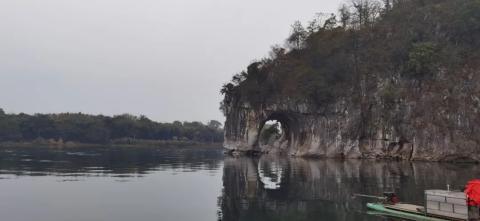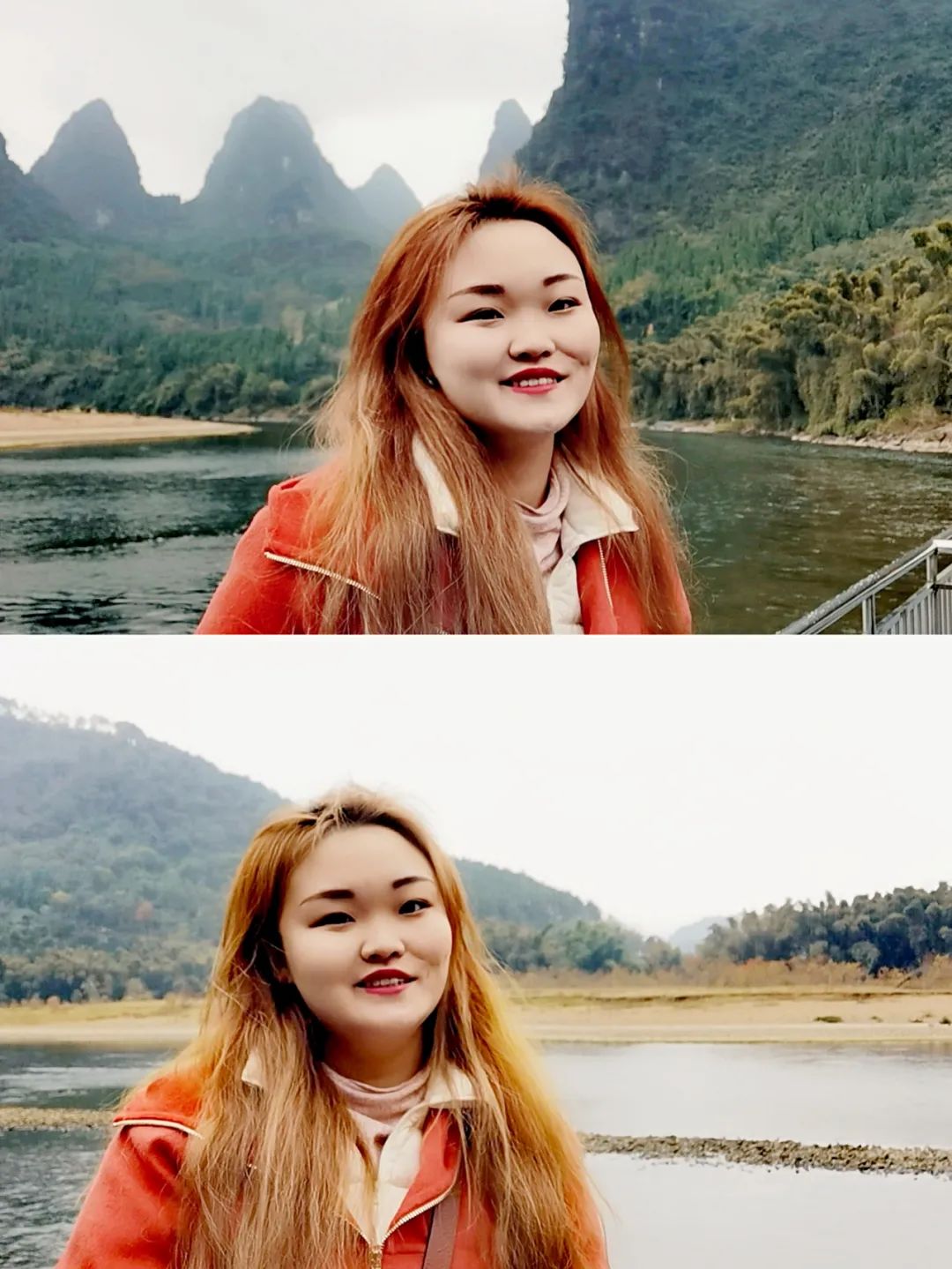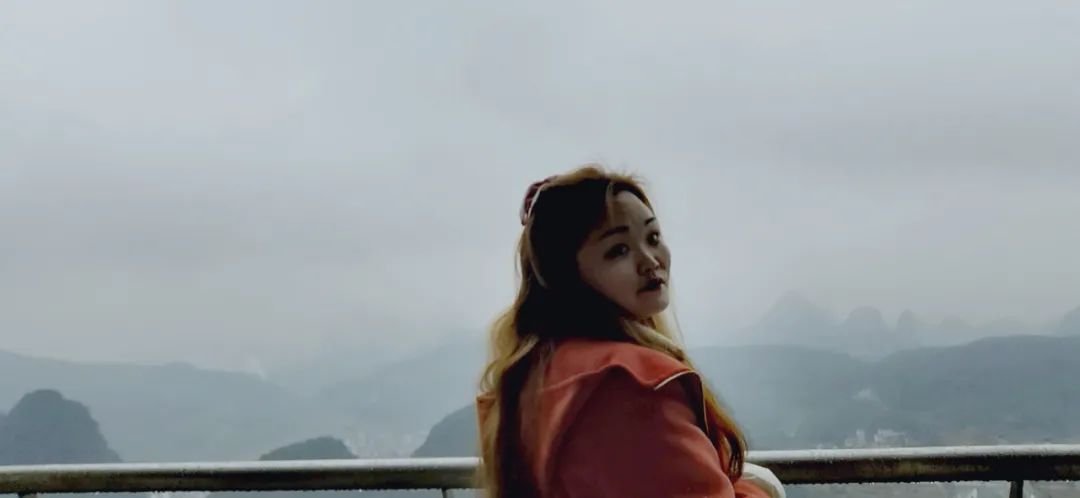



In the early summer of 1637 AD, 50-year-old Xu Xiake traveled to Guangxi and came face to face with the landscape of Guilin that he had longed for. This great traveler who had seen all the mountains and rivers rarely expressed emotion:

The 150,000-word "Diary of a Journey to Western Guangdong" is the world's first work that systematically explains the limestone karst landforms. In his diary, Xu Xiake explained the formation (physical erosion) mechanism of Guilin’s karst landform in one sentence:
"The Gai River flows against the mountains, the mountains are cut into walls, the flow turns back into the sand, and cloud roots burst out..."

In hundreds of millions of years of vicissitudes of life, pure limestone layers with a thickness of 3,000 meters have been deposited here; plate movements, earth fissures and landslides have produced numerous joints and gaps in the huge rock layers, and rainwater has soaked in, dissolving the rock mass vertically downwards. ; The earth's crust rose, and Guilin became a basin surrounded by mountains on three sides. The flowing water converged but did not gather, acting as carvers and porters. The subtropical monsoon climate, and it is located near the Tropic of Cancer, has a hot climate and abundant rainfall, and Guilin's "orogenic team" has a steady stream of resources. An injection of fresh blood.
The flowing water has eroded the foothills of the mountains in the basin, causing the slopes to collapse and retreat in parallel; over time, only the hard cores of rock remain standing, forming independent stone peaks that are separated from each other and staggered. This is the magical peak forest plain.

After Qin unified the six kingdoms, in order to consolidate its power, it attacked the Xiongnu in the north and Lingnan in the south. In 219 BC, Qin Shihuang gathered the power of the seven kingdoms, commanded 550,000 troops, and pointed his sword at Baiyue. This was an arduous battle. The road into Guangxi was winding and dangerous. The Qin army often ran out of food and grass and struggled. The tall Nanling Mountains in the distance looks like a huge wall stretching between Hunan and Guangxi. There is a natural passage from Hunan to Guangxi - the Hunan-Guangxi Corridor. The Xiangjiang River and Lijiang River face each other, which is only 30 kilometers away. The people of Qin who were good at water conservancy proposed to dig a canal at the throat to connect the Xiangjiang River and the Lijiang River. The Qin army could then march south along the Lijiang River and reach the coast of the South China Sea in a few days, taking in all the land in Lingnan!
They split mountains and cut cliffs, built embankments and opened canals to divert the Xiang River into the Li River. In 214 BC, an artificial canal with a total length of 37 kilometers was built and opened to navigation. This is the Lingqu. At the time of Qu's success, the Qin army was even more powerful and quickly conquered Lingnan.
In the 2000 years after Qin Shihuang's southern expedition, it became the most convenient land and water channel connecting north and south China, as well as China and Southeast Asian countries. The spiritual blood of the Chinese nation has also been able to communicate with each other more smoothly.

My thoughts are in Guilin, and I want to go there. The Xiang River is deep.
In his poem to send off his friends to Guilin for his new post, Han Yu directly expressed his deep admiration:
The river is a green belt, and the mountains are like jade hairpins.
Along the Hunan-Guangxi Corridor came batches of literati who were frustrated by officialdom. The soft and beautiful landscape of Guilin was the first solace for these talented men who had experienced hardships on the road to exile. Liu Zongyuan, who was demoted to Liuzhou, sighed like this when passing by Guilin:
"If you don't aim too far, if you don't have tombs and dangers, if you surround the mountains and rivers, and come out as one in all directions, show off your wonders and compete with each other, don't give in to others, and travel all over the world, you will only get it..."
What is the reason that makes these casual people stop? Marshal Chen Yi gave the answer:
I would like to be a Guilin person, not a god.
Video link from Tencent Video: Local Truth-Full High-energy Guilin Landscape Promotional Video
Now is the off-season for tourism in Guilin. I think of going to the northwest in the summer to bring the wind and rain with me. This time I brought the cold air directly. The temperature in Guilin is 4 degrees Celsius. Ultra-thick down jackets are as daily essential as socks for us Northeastern children, but I didn't wear any, so I wore a thin down jacket under my coat. It was so cold and there was no hiding. During the trip to Guizhou, we quickly descended and escaped because of the cold and humid climate.
I only felt the warm winter sunshine for less than 24 hours in Nanning, and then I said goodbye. The temperature suddenly changes. When you are on a bamboo raft on the Long River, the gentle north wind blows into the gaps in your clothes, giving you a chill.
This is what you can do when you first come to Guilin.
Get off at Yangshuo High-speed Railway Station and take the bus from the door to Yangshuo County, 20 yuan. Put down your luggage when you arrive and have a meal of local beer-battered fish. You can order fresh fish for a price per pound, or you can order Meituan's set meal, which is cheap.
Book tickets for "Impression·Liu Sanjie" from Meituan or Fliggy (tickets are about 200), a real-life landscape performance. Liu Sanjie is a legendary Zhuang folk singer. In order not to succumb to bullies, she and her lover finally walked into the river to end their lives. There are more actors than the audience, and the wonderful collision of river lanterns, fisheries and fires also makes visitors' eyes light up.
"A legend that is older than life, a theater that is as old as the earth. The most leisurely seats are called grass, the most beautiful hall walls are called air, the most luxurious theater is called nature, and the most magnificent performances are called landscapes."

The next day I got up with the morning dew (of course I slept until I woke up naturally), took a taxi to Jinqiao Pier, took a bamboo raft to Jiuxian County, the most exciting area for rafting on the Yulong River, and slowly rafted along the river, single or double. The price of a boat is the same 225 yuan. This is not good for traveling alone and is not cost-effective, so don’t learn from me on this point.
90 minutes of bamboo rafting, sometimes a small boat on the Long River, as if standing in the dust and wind; sometimes the drifting raft rushes down the steep slope, creating a wave of water that makes the corners of my pants suck in joy.
There are people who rent bicycles and electric scooters at the dock in Jiuxian County. Bikes are 30 yuan and electric scooters are 50 yuan (you can negotiate the price). Because my aunt blew my pants, I didn't negotiate. Tracing up the Yulong River, you can see one scene at a time, and the Ten Mile Gallery is right before your eyes. The car can be ridden back to the county town, a journey of nearly 20 kilometers, which is a proper outdoor training. There are also some scenic spots that you can go to or not. Ruyi Peak (ticket 180) can be recommended. Overlooking the karst peak forest is another feeling. Of course, I went there during the day on the third day.
Yangshuo West Street at night is another prosperous scene of singing and dancing. The mountains are ethereal in the hazy night, and the lake is full of feasting and feasting. The stories here belong to other travelers. They stop here, but I don’t want to tell them about them. my journey.

On the third day, you can visit the small scenic spots in Yangshuo like me, or you can go to Xingping. To get to Xingping, you can take a boat trip from Guilin to Two Rivers and Four Lakes and it takes 4 hours to get here. Or it’s half an hour’s drive from Yangshuo. The Yangshuo high-speed rail station is also in Xingping, which has the feel of an ancient town. The streets of the ancient town with bricks and tiles. Either take a boat or walk upstream The township road is less than one kilometer away, and you can see the filming location after RMB 20, click a photo, and get rich.

To reach Guilin, you can take the high-speed rail or bus. The buses are very cost-effective in terms of quantity and price. The direct bus to the high-speed rail station (5 yuan) only takes about ten minutes. The transportation is very convenient. You can return to Guilin in the evening.
On the fourth day, we walked around the city of Guilin, and the Elephant Trunk Mountain in the primary school textbook became a memory like spicy strips. Elephant Mountain Park (55 yuan). Seeing Elephant Trunk Mountain up close becomes a dream come true. A more cost-effective way is to go to Qizhou Park on the other side of the river to see the other side of Elephant Trunk Hill.

Walking around the East and West Alleys and Wangfu Palace, and eating Guilin Rice Noodles, time flies by.
If you still have time, you can take a one-day trip to the Longji Rice Terraces. Sowing in April, irrigation and earing from April to September, and harvest in October. I looked at the real-life pictures posted by netizens in the past few days and decided not to go.
The plane flew to Sanya on Saturday. As soon as I left, the temperature picked up.

